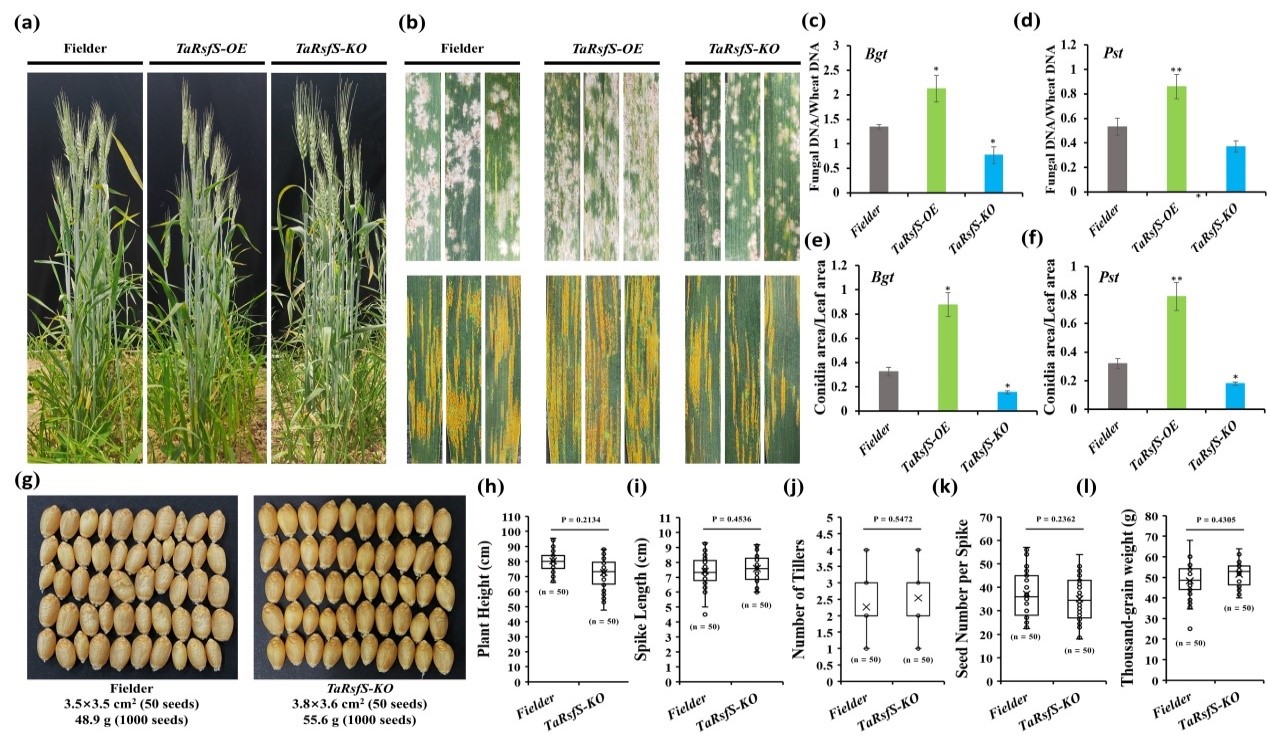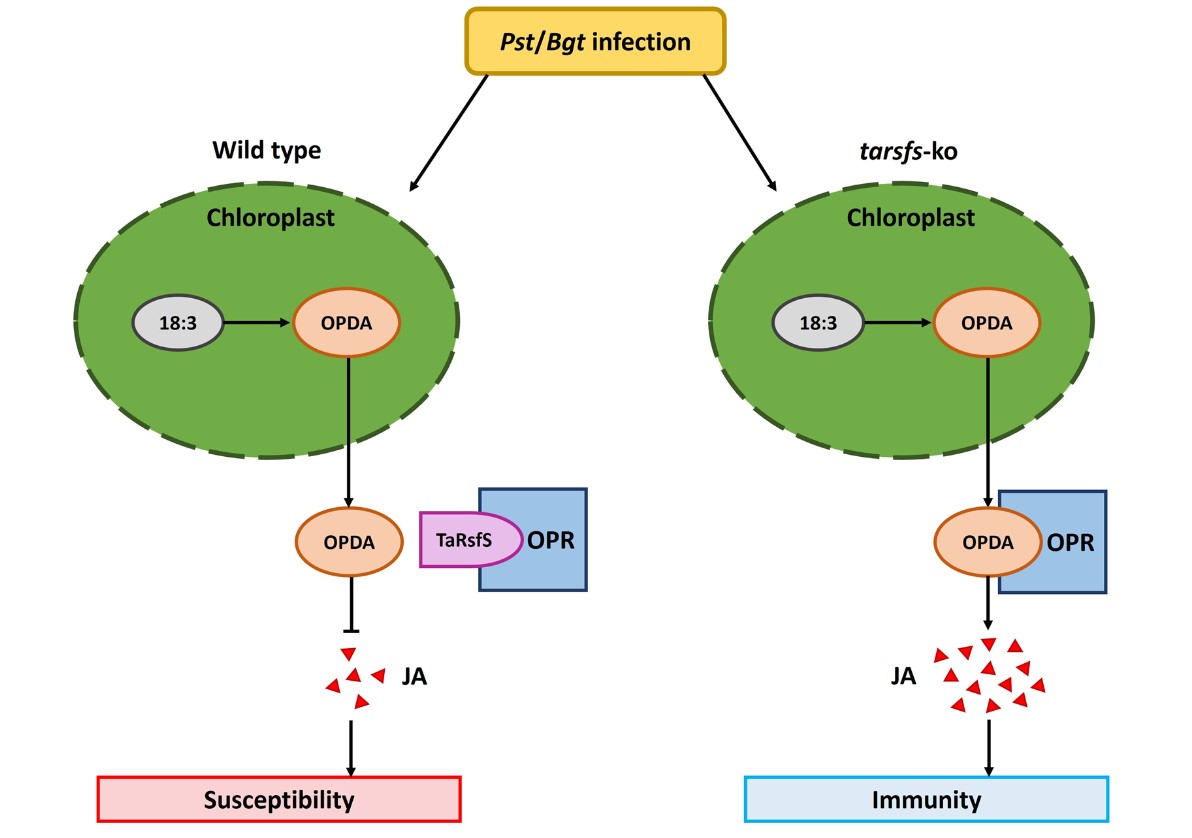Recently, the research paper titled "Inactivation of a Wheat Ribosomal Silencing Factor Gene TaRsfS Confers Resistance to Both Powdery Mildew and Stripe Rust" was published online in the journal Plant, Cell & Environment by the Crop Disease and Pests Monitoring and Management Team of our college. Li Ruobing, a former Ph.D who has graduated from our college, is the first author of this paper, while Professor Wang Baotong and Associate Researcher Li Qiang are the co-corresponding authors.
This study revealed the molecular mechanism by which wheat becomes susceptible to disease when infected by Blumeria graminis f. sp. tritici (Bgt) and Puccinia striiformis f. sp. tritici (Pst). Specifically, the ribosomal silencing factor TaRsfS forms a TaRsfS-TaOPR1 complex with 12-oxo-phytodienoic acid reductase 1 (OPR1), inhibiting the biosynthesis of jasmonic acid (JA) in the host.Powdery mildew and stripe rust are important diseases of wheat worldwide, and cultivating and planting resistant varieties is the most economical and effective prevention and control measure. Identifying potential target genes for precise improvement of crop resistance and elucidating the molecular mechanisms of resistance are of great significance for the durable control of diseases. The ribosomal silencing factor (RsfS) is a conserved protein encoded by almost all bacterial and eukaryotic genomes. It binds to the ribosomal large subunit 50S to inhibit the initiation stage of translation and participates in biological processes such as organism growth and development and stress response. However, the role of TaRsfS in plant response to biotic stress is still unclear.The study found that overexpressing TaRsfS significantly reduced wheat resistance to powdery mildew and stripe rust, while knocking out TaRsfS using CRISPR-Cas9 significantly enhanced wheat resistance, indicating that TaRsfS negatively regulates wheat resistance to these two diseases. Agricultural trait measurements at the adult plant stage showed that knocking out TaRsfS had no significant effect on the main agronomic traits of wheat (Figure 1). This suggests that TaRsfS can be used as a target gene for genetic improvement of wheat resistance to powdery mildew and stripe rust.

Figure 1. Knockout of TaRsfS enhances wheat resistance to powdery mildew and stripe rust without significant effects on main agronomic traits
Using protein interaction technology, the study found that TaRsfS interacts with TaOPR1 when the host is infected by pathogens. TaOPR1 positively regulates wheat resistance to powdery mildew and stripe rust downstream of TaRsfS. Transcriptome sequencing showed that overexpressing TaRsfS downregulated a large number of JA signaling pathway-related transcription factors and key genes. By constructing protein truncations, molecular docking, and in vivo and in vitro enzyme activity assays, it was found that TaRsfS competitively binds to the enzymatic activity pocket of TaOPR1, affecting the normal binding of TaOPR1 to its substrate, inhibiting JA biosynthesis, and thus making wheat susceptible to powdery mildew and stripe rust (Figure 2).

Figure 2. A schematic diagram of the negative regulation of wheat resistance to powdery mildew and stripe rust by the TaRsfS-TaOPR1 interaction
This study was funded by the National Key Research and Development Program and the "111 Project" of the Ministry of Education, among other projects.
Original link:https://doi.org/10.1111/pce.15172